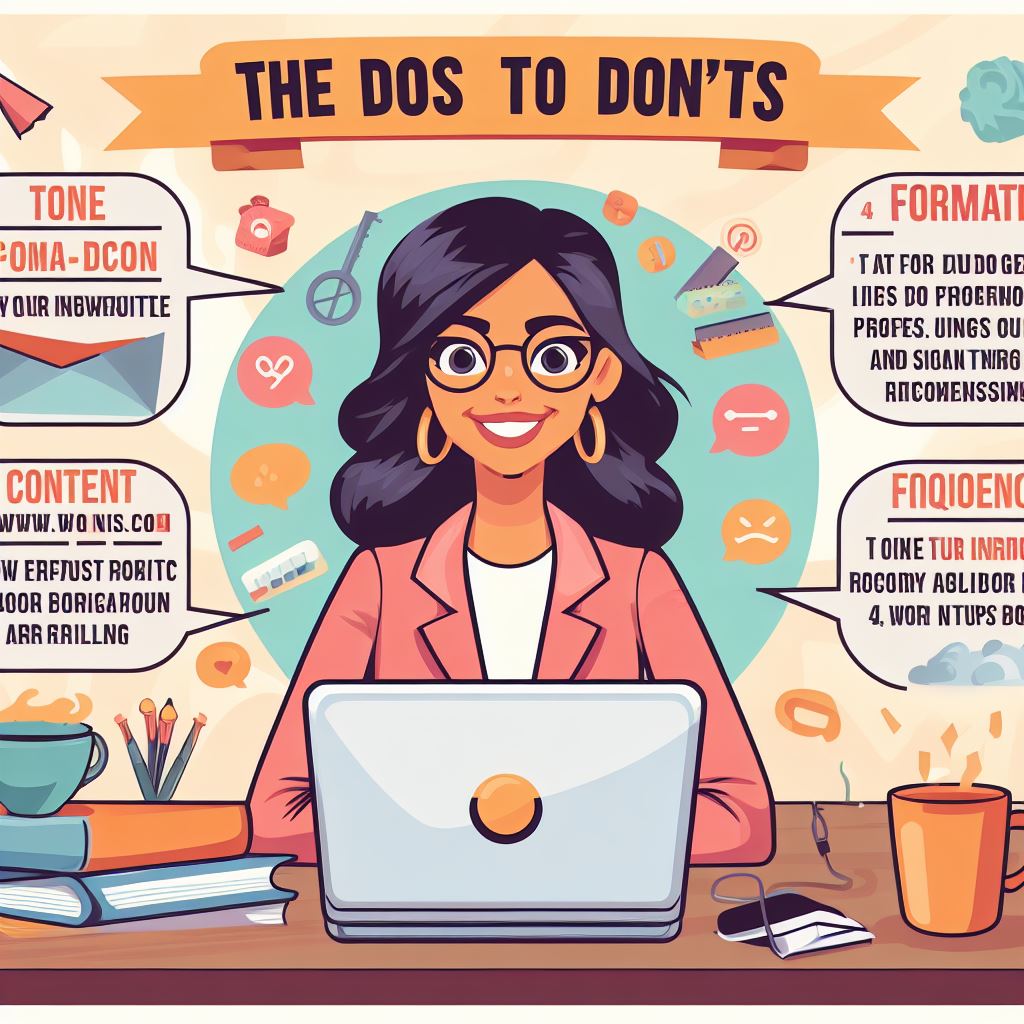Emailing Professors the Right Way, Unlock and Ignite Academic Success
Mastering the Art of Communication: A Respectful Approach to Emailing Professors
Emailing professors is a crucial aspect of academic communication, but it’s essential to strike the right balance between seeking guidance and respecting their time. Follow these guidelines to ensure your emails are professional, concise, and respectful, avoiding any unintentional annoyance.

1. Use Clear and Descriptive Subject Lines: Catch Their Attention
Craft subject lines that concisely summarize the purpose of your email. Professors receive numerous messages, so make yours stand out by providing a clear indication of the content within.
2. Begin with a Polite Greeting: Set the Tone Respectfully
Start your email with a polite greeting. Address the professor using their appropriate title (Dr., Professor) followed by their last name. A respectful tone from the beginning sets a positive tone for the entire email.
3. Clearly State Your Purpose: Be Direct and Concise
Get straight to the point. Professors appreciate clarity. Clearly state the purpose of your email in the opening lines, whether it’s seeking clarification on an assignment or asking for advice on a research topic.
4. Introduce Yourself Briefly: Provide Relevant Context
If the professor may not be familiar with you, briefly introduce yourself. Mention the course you are enrolled in or any specific context that helps the professor place you within their academic sphere.
5. Be Mindful of Tone: Maintain Professionalism
Keep your tone professional and formal. Avoid using overly casual language or abbreviations. Remember, an email to a professor is a professional communication, and maintaining that tone is crucial.
6. Structure Your Email: Organize Information Effectively
Organize your email into clear and concise paragraphs. Use proper grammar and punctuation. A well-structured email is easier to read and demonstrates your commitment to effective communication.
7. Ask Specific Questions: Avoid Ambiguity
If you have questions, be specific. Avoid vague inquiries that may require extensive back-and-forth. Professors appreciate when students are clear about what they need.
8. Respect Response Time: Understand Their Schedule
Acknowledge the professor’s busy schedule and inquire about an appropriate timeframe for their response. This shows respect for their time and also sets clear expectations.
9. Proofread Before Sending: Eliminate Errors
Before hitting “send,” carefully proofread your email. Eliminate spelling and grammatical errors. A well-proofread email reflects professionalism and attention to detail.
10. Express Gratitude: Conclude with Appreciation
Conclude your email with a polite expression of gratitude. Thank the professor for their time and assistance. This small courtesy goes a long way in fostering a positive professor-student relationship.
Conclusion: Building Professional Bridges
In conclusion, emailing a professor is an art that combines respect, clarity, and professionalism. By following these guidelines, you ensure that your emails are informative, respectful, and, most importantly, not annoying. Approach each email as an opportunity to build a positive and professional bridge with your professors.


